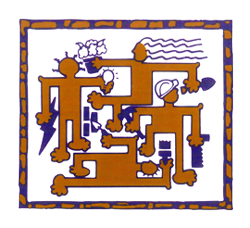For homeowners, the ceiling fan is one of the most favorite home add-ons. In fact, ceiling fans are so popular that there are nearly 17 million ceiling fans sold in the U.S. each year. Not only do ceiling fans add style to a room, but they also help to keep energy costs down when used correctly. On the big island, where temperatures can get hot and home-cooling costs can get high, a ceiling fan is a must. Here are some must-know ceiling fan facts, as well as tips for choosing the right ceiling fan for your home.
Know How to Use Your Ceiling Fan
The first thing that you should know is that the right ceiling fan, when used correctly, can save you money on your home’s cooling costs each month. That’s because a ceiling fan uses much less energy than does a central air conditioner: 100 w compared to 2,000 to 5,000 w on average. Because a ceiling fan can make you feel much more comfortable, the urge to crank the AC is diminished. However, keep in mind that a ceiling fan is designed to keep you cool, not the room in which the fan is located. Therefore, only use a ceiling fan when you’re directly benefiting from it. Otherwise, a ceiling fan’s motor can get hot enough to actually increase the temperature in a room.
Consider Your Home’s Location
You want to get a fan that will not only keep your home cool and save on energy costs, but that is also high quality and will last for years to come. To help increase your ceiling fan’s longevity, make sure that you consider your home’s location – if you live close to the ocean, the fan’s wet and damp rating will be important. This will be even more critical if you’re searching for a fan for outdoor use. Always buy the quality of fan you need based on the environment and location in which you live.
What Size Fan do I Need?
A typical rule of thumb is to find a ceiling fan that fits with the size of your room: not too large or not too small. If you have an 8′ x 8′ room, don’t get a ceiling fan with 6-foot blades (it would dominate the room). Some typical room sizes and recommended fan sizes are:
• 100-150 Square Foot Room: 3-4 ft. Diameter Size
• 150-250 Square Foot Room: 4-5 ft. Diameter Size
• 250-400 Square Foot room: 5-6 ft. Diameter Size
• 400+ Square Foot Room: 5-6 ft. Diameter Size (and more than one fan might be acceptable)
Make sure to hang your fan high enough; you don’t want that tall relative of yours to come over and nick their head on a low-hanging fan. Any room shorter than 8 feet tall probably shouldn’t have a fan and above 9 feet you’re probably safe to install any type of fan (unless it’s very low-hanging).
Weigh Style and Efficiency
The last—but certainly not the least important—thing that you should consider when choosing a ceiling fan for your home is the fan’s style and efficiency. Today, fans come in a variety of different styles, and are manufactured in designs that fit nearly any architectural and home concept. Current home design trends may also play a role in the fan that you choose. If you have high ceilings, use fans that are not only aesthetically pleasing but also function properly with the appropriate extension rods.
But style isn’t the only important thing; you also should be thinking about efficiency. The bigger the fan blades, the more air that the fan will move. You can also purchase a fan that is manufactured to be ultra energy-efficient. Keep in mind that most fans now come with remote controls for ease of use – this allows you to control fan speed and lights. Some fans even have automatic settings that can turn on and off when you enter or leave the room.
Find the Perfect Ceiling Fan For You
Ceiling fans are a must in Hawaii. If you need guidance to find the ceiling fan that is right for you, contact Greg Putman Construction for free advice.


